In September of 2017 we decided to do something that we last did more than 25 years ago, which was to see and photograph Hadrolaelia jongheana in the habitat. The idea was to visit 4 areas that we know the species can still be found and in the end we were able to visit only 2 of them. It was a successful bunch of exploratory trips though, some one-day and some multi-day and we manage to see the species and many others along the way.
Below we can have a good look at the Itambé peak, from an unusual angle as we usually see it from the opposite side. This time of the year it is actually quite rare to see the peak as clouds usually cover it for most of the time. And as we can see, it was close to get covered as the clouds just lifted. Picture was taken from more than 25 miles away, so it gives a good idea of the highest peak in central Minas Gerais. I was planning to hike up to the top, but after many days of long hikes this had to be postponed due to another time.
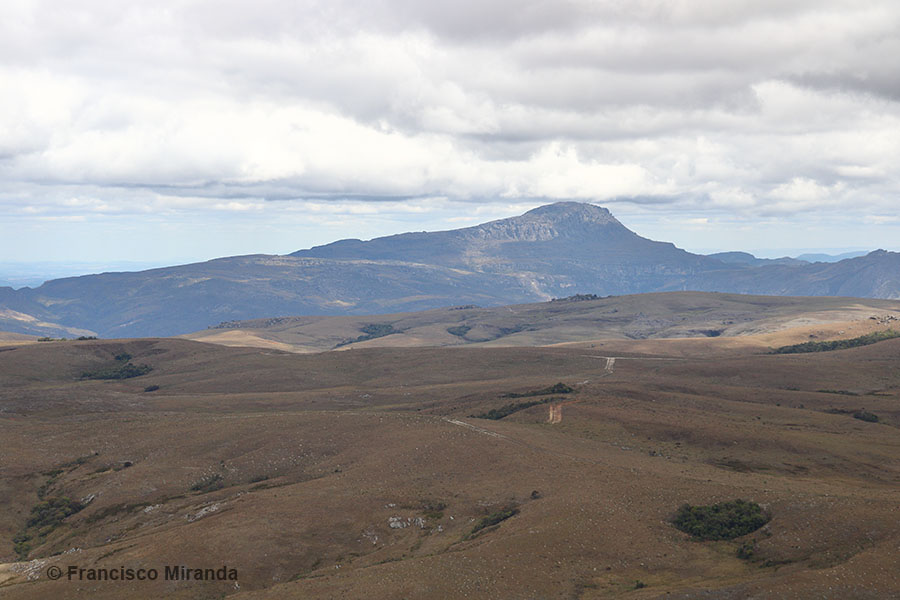 |
|
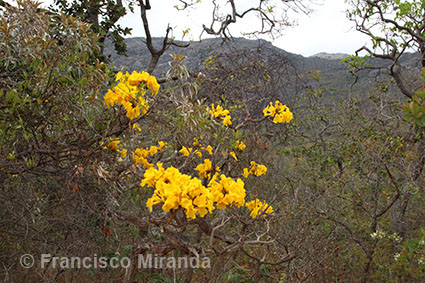 |
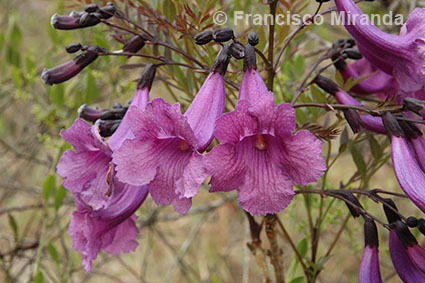 |
| Going
up on these mountains gives us a chance of seeing a lot of plants,
and not just orchids. As September is Spring in Brazil we can see a
lot of stuff in flower and the two pictures above show just that.
These are plantas of Bignoniaceae, the first one being one
of the yellow Tababuia trees (Ipês) that are very common
and produce a pretty spectacular show when in flower. The second is
a shruby Jacaranda (?). Below left is one of the very numerous species of shrubby Melastomataceae thar are mostly starting to flower at this time. |
|
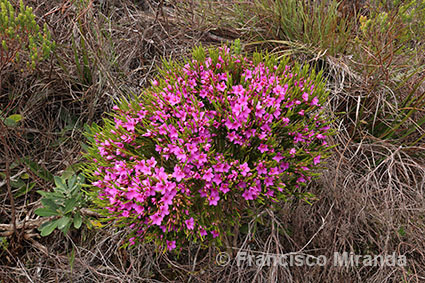 |
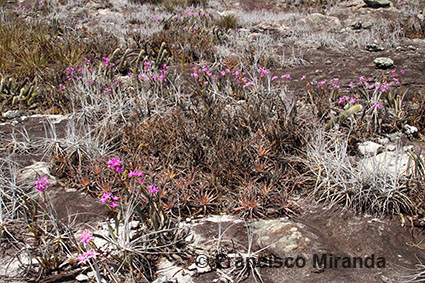 |
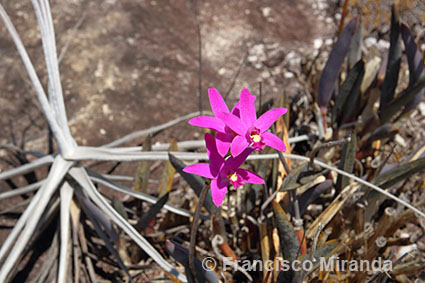 |
Hoffmannseggella rupestris was in flower at several of the
locations we visited. We were lucky, as the species flower from May
to October depending on the location and you have to know the
populations to make sure plants are in flower when you visit. There were a few small species with yellow flowers in bloom too. And just below is the only plant of Hadrolaelia jonghena in flower on the first 3-day trip. Encouraging to a point, but I would have had to hike two more days to get to the main population I know (and back). Maybe next time... |
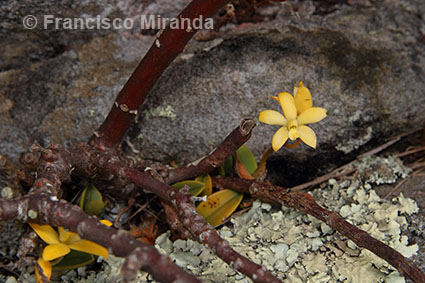 |
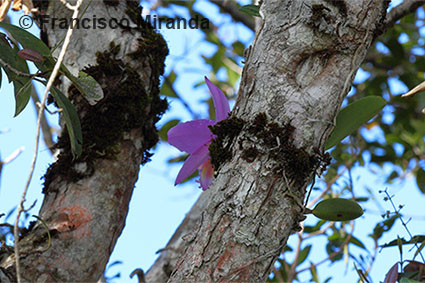 |
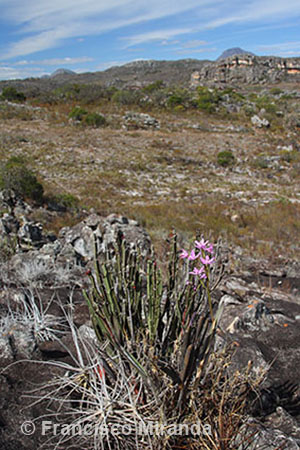 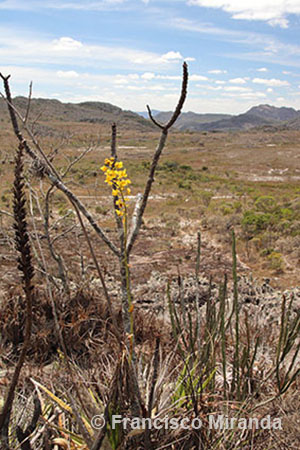 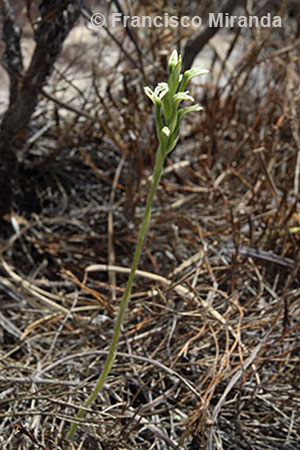 |
|
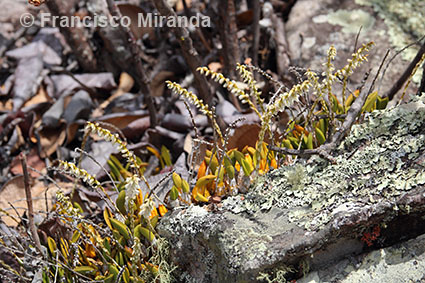 |
As I mentioned, Hoffmannseggella rupestris is very common,
and in some especially dry areas plants can be found associated with
xerophytic Bromeliaceae (some silver-leaved Tillandsia
plants seen here) and Euphorbiaceae. Other ground rupicolous
or terrestrials are also found, as Cyrtopodium and Pelexia (above). Ledge rupicolous are also common, and Bulbophyllum rupicolum plants are easy to spot when in flower although fairly small. |
| Not so
easy to find are plants of Constantia cristinae. It helps
when they are in flower, but as they grow associated with lichens on
vertical walls between big boulders you really have to know where
they are to find them. It doesn't help plants are really small with
flowers being only about 1/2" across. But we left to the end our best jongheana place, and after so much time it was great to see so many plants in flower. Besides the orchids, there were lots of little yellow-flowered succulents and a variety of species of Vellozia in flower (below). |
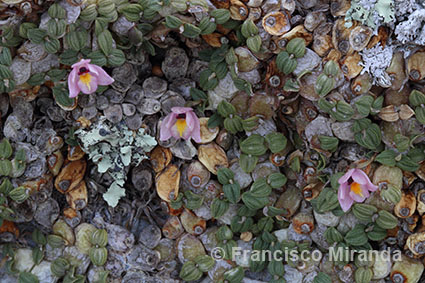 |
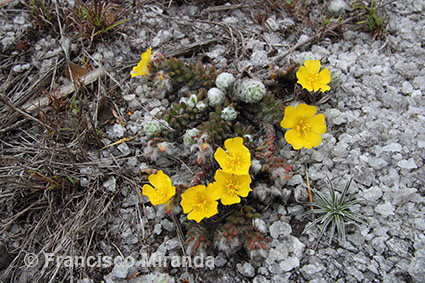 |
|
|
|
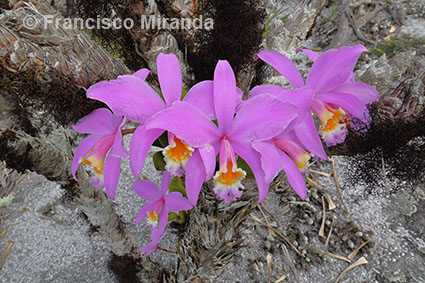 |
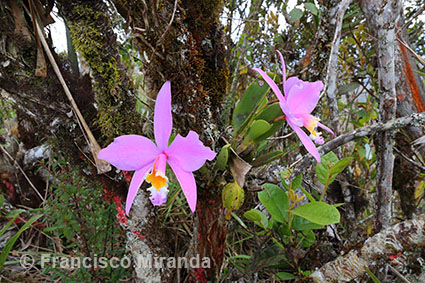 |
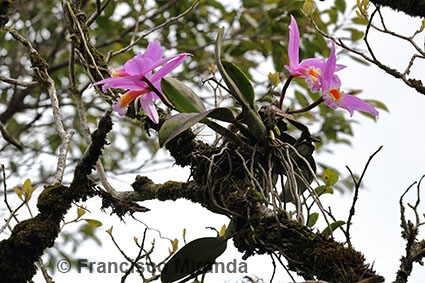 |
|
Hadrolaelia jongheana, despite being considered extinct by some,
is still alive and well in the habitat. Plants grow in a variety of
ways, quite frequently on Vellozia (and this way quite
similar to H. sincorana way more to the north on the
Chapada Diamantina in Bahia). But as the conditions here are not as
dry as up north, there is the develpment of an altitude forest and
jongheanas are quite at home there too. Below we can see different flower color forms of a species of Prostechea that grows on Vellozia and also a species of Epidendrum growing on trees in the altitude forest. Terrestrial Oncidium plants are also common among the vellozias. |
|
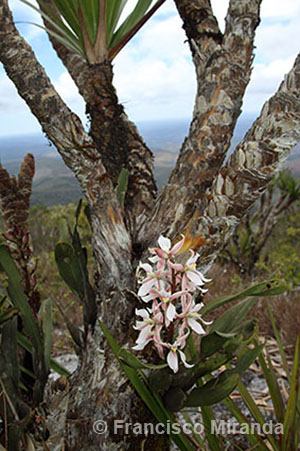 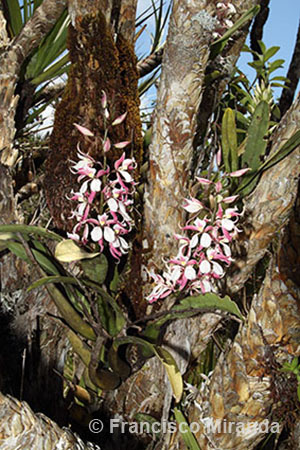 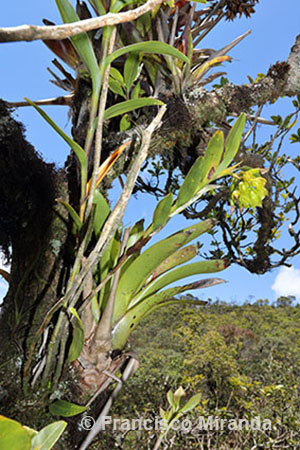 |
|
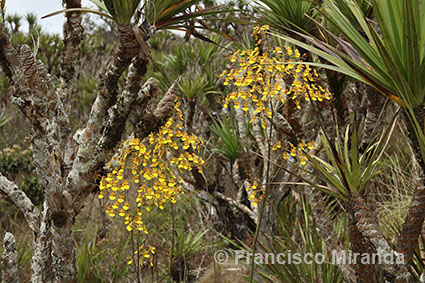 |
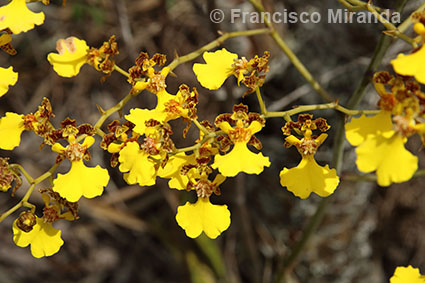 |
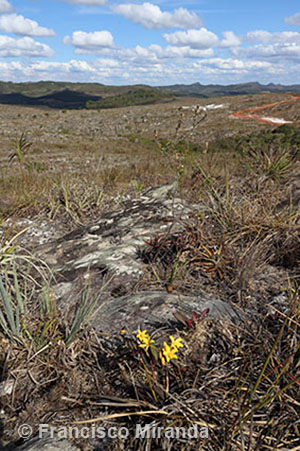 |
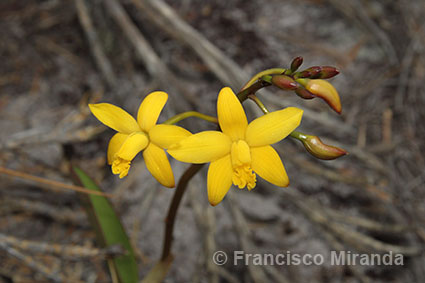 |
| Back from the jongheana areas, we stopped (as always) in our Hoffmannseggella kleberi and H. briegeri habitats. Flowering season was starting for those two but peak flowering occurs when the rains start. | |
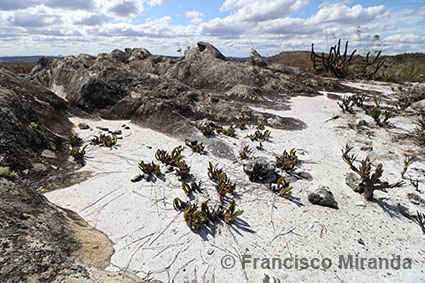 |
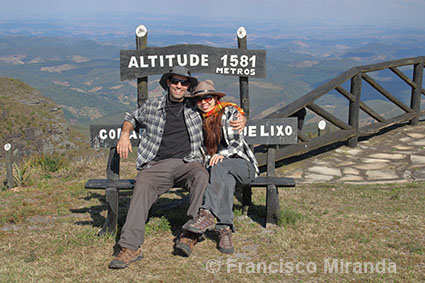 |
|
The first of the last 2 pictures show lots of plants of
Hoffnannseggella kleberi growing in a rock depression filled
with chrystaline sand. As the rains were not there yet the
depressions was still dry. When rains come a few weeks later, the
plants can end up staying covered to up to an inch of water for
several months. The last picture show a couple of very happy travelers after a jongheana treatment. Not many people have that chance. |
|
